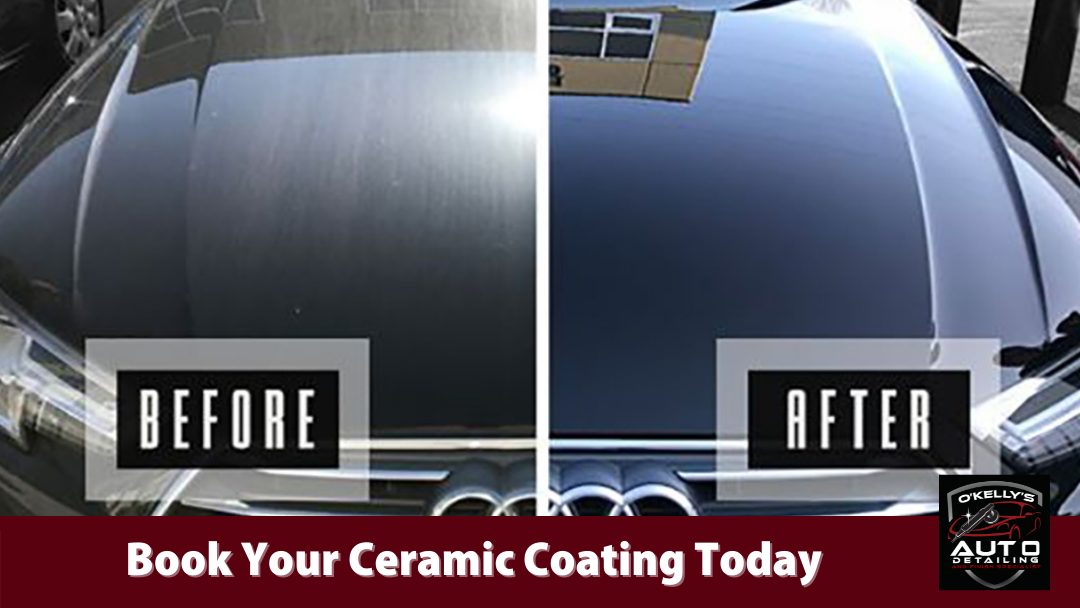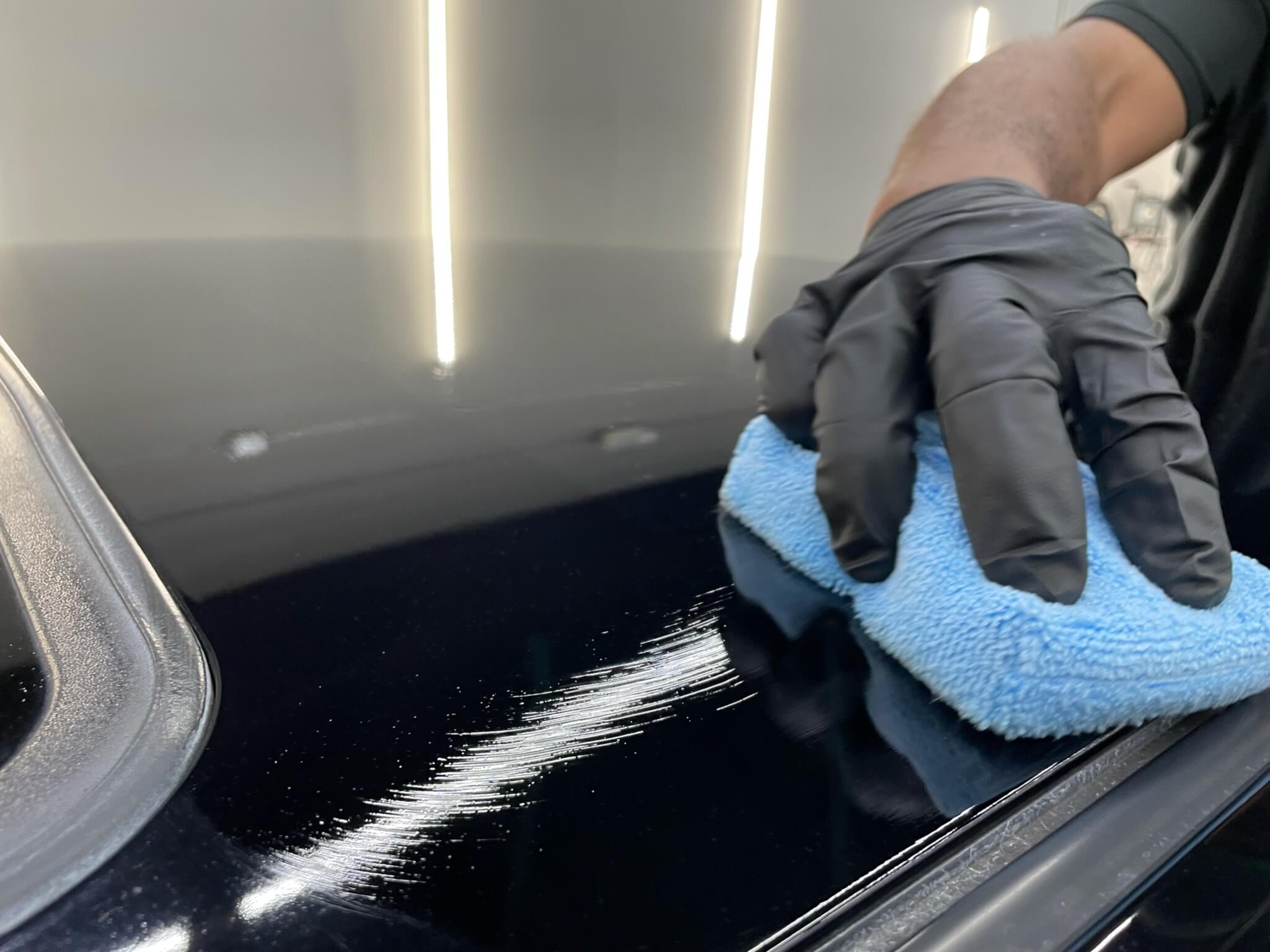Why Drivers Count On Ceramic Coating Philadelphia for Superior Lorry Treatment
Why Drivers Count On Ceramic Coating Philadelphia for Superior Lorry Treatment
Blog Article
Why Ceramic Layer Is the Ultimate Remedy for a Flawless Complete
Ceramic finish has become a leading service for those seeking a remarkable coating for their vehicles, many thanks to its impressive sturdiness and safety features. This advanced fluid polymer not only bonds seamlessly with manufacturing facility paint yet additionally provides a formidable barrier against typical risks such as scratches, UV rays, and ecological contaminants. Moreover, its hydrophobic buildings streamline upkeep while enhancing aesthetic allure. Understanding exactly how this technology contrasts to typical approaches and exploring its application nuances can disclose even a lot more regarding its worth. What elements truly established ceramic covering apart?
What Is Ceramic Finish?

When used appropriately, ceramic layer produces a hydrophobic surface that repels water and dirt, making it easier to maintain and clean up. Unlike typical waxes or sealants, which commonly offer brief security, ceramic layers can last for several years, relying on the product high quality and application technique. The procedure of applying ceramic finish requires careful preparation, consisting of detailed cleaning and often paint improvement, to make sure ideal bonding and effectiveness.
Ceramic layers are not limited to auto surface areas; they can additionally be used on numerous materials, consisting of glass, metal, and plastics, offering a versatile solution for improving defense. Overall, ceramic finish stands for a substantial innovation in surface protection technology, combining both useful and aesthetic advantages for a variety of applications.
Advantages of Ceramic Layer
While many surface protection choices exist, the advantages of ceramic finishing attract attention because of its distinct residential properties and long-lasting performance. One of the primary advantages is its remarkable longevity. Ceramic Coating Philadelphia. Unlike standard wax or sealers that require regular reapplication, ceramic finishings supply a durable layer that can last for several years, substantially minimizing maintenance efforts
Another noteworthy advantage is enhanced protection versus environmental impurities. Ceramic coverings develop a hydrophobic surface area that repels water, dirt, and various contaminants, making it simpler to cleanse. This feature not only maintains the automobile's appearance but additionally lessens the risk of rust and oxidation, especially in severe climate condition.
Moreover, ceramic coverings use exceptional resistance to UV rays, avoiding fading and destruction of paint over time. This UV security is vital for keeping the visual worth of surface areas and lorries revealed to guide sunshine.
Furthermore, the glossy coating accomplished with ceramic finish improves the general visual charm, offering surface areas a showroom-quality shine. Generally, ceramic coverings stand for a considerable development in surface area defense modern technology, supplying enduring benefits that satisfy both functional and visual demands.
Exactly How It Works
Understanding the scientific research behind ceramic layers reveals exactly how they supply such remarkable protection and durability. At its core, a ceramic covering is a liquid polymer that chemically bonds with the automobile's factory paint. This bonding produces a safety layer that is both oleophobic and hydrophobic, repelling water, dirt, and oil. The primary part of the majority of ceramic coatings is silicon dioxide (SiO2), which is originated from quartz. This substance adds to the covering's solidity and resistance to scratches, UV rays, and ecological impurities.
The application process entails several actions, including surface area prep work, which is vital to attaining ideal bond. When applied, the finish undergoes a healing procedure, during which it sets and creates a semi-permanent bond with the paint surface area. This bond is what identifies ceramic finishes from traditional waxes and sealers, giving a longer-lasting protective obstacle that can sustain for several years.
In addition, the density of the finishing can boost its protective top qualities, guaranteeing that it can withstand extreme problems. Eventually, the science of ceramic coatings incorporates advanced products with ingenious application methods to supply an unrivaled degree of protection and visual enhancement for cars.
Contrast With Typical Approaches
When contrasted to standard paint protection methods such as waxes and sealants,The advantages of ceramic coverings end up being especially obvious. While waxes provide a short-lived luster, usually lasting a few weeks to a pair of months, ceramic layers offer a long-lasting safety layer that can withstand navigate to this website for numerous years. This toughness dramatically lowers the regularity of reapplication, making ceramic finishes a much more affordable option with time.
In addition, standard approaches usually call for substantial prep work and numerous applications to achieve an adequate degree of defense. In contrast, ceramic finishes bond at a molecular degree with the lorry's surface, developing a robust guard versus ecological contaminants like UV rays, acid rainfall, and roadway salts. This bond boosts the automobile's resistance to scratches and swirl marks, which are prevalent with standard waxes and sealers.
Moreover, the hydrophobic buildings of ceramic coatings fend off water and dust, bring about simpler cleansing and upkeep. In comparison, wax and sealant-treated surface areas can bring in crud, requiring more frequent washing - Ceramic Coating Philadelphia. On the whole, ceramic finishings not just offer superior defense but also deliver an extra aesthetically enticing and long-lasting finish, establishing them as the recommended option for discerning vehicle owners
Application and Upkeep Tips

Making use of a foam applicator, use the finish in small sections, adhering to the producer's guidelines pertaining to thickness and overlap. Permit enough treating time between coats, normally 1 day, to make certain appropriate bonding. After application, it is important to stay clear of exposure to water or severe components for at least a week to enable the covering to fully heal.
In addition, making use of a ceramic upkeep spray can boost the covering's hydrophobic residential or commercial properties and durability. Normal evaluations for any kind of signs of wear will certainly aid keep the finishing's stability and protect that anchor pristine finish.
Final Thought
In final thought, ceramic coating arises as an exceptional alternative for accomplishing a remarkable auto surface. By creating a robust bond with manufacturing facility paint, ceramic finishing effectively guards against scrapes, go right here UV rays, and environmental contaminants.

Report this page